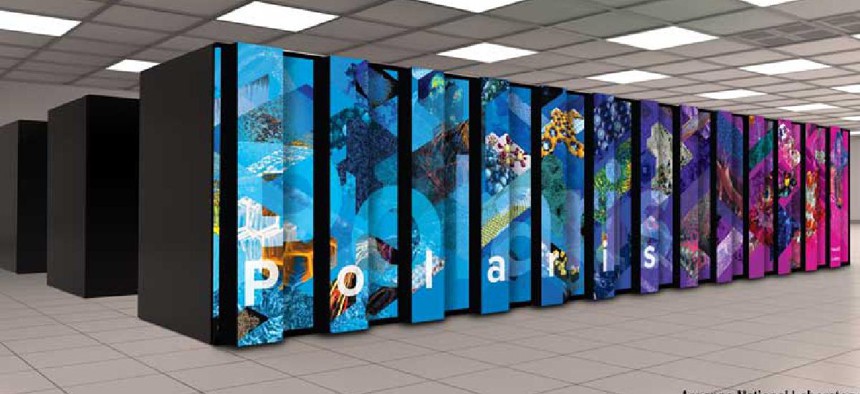Argonne unwraps testbed supercomputer to prep for exascale


Connecting state and local government leaders
Argonne National Laboratory has announced the Polaris high-performance computer, a testbed system to help get software and applications ready to run on future exascale machines.
Argonne National Laboratory has announced it will build a high-performance computer (HPC) to get software and applications ready to run on future exascale machines.
Polaris, built by HPE, will help make the transition from HPC to exascale. It delivers up to four times faster performance than Argonne’s current supercomputers and will enable scientists and developers to test and optimize software and applications for the artificial intelligence, medical, engineering and scientific projects planned for Aurora, which is expected to launch in 2022.
“Beyond getting us ready for Aurora, Polaris will further provide a platform to experiment with the integration of supercomputers and large-scale experiment facilities,” Argonne Leadership Computing Facility (ALCF) Director Michael E. Papka said.
“Polaris will also provide a broader opportunity to help prototype and test the integration of HPC with real-time experiments and sensor networks,” Papka said. It will “allow our users to enter the era of exascale AI.”
The testbed system will also provide a platform where researchers can experiment with integrating supercomputers and large-scale experiment facilities, like the Advanced Photon Source and the Center for Nanoscale Materials, both DOE Office of Science User Facilities, Argonne officials said.
According to the announcement, Polaris will be customized for modeling, simulation and data-intensive workflows. It will use 280 HPE Apollo Gen10 Plus systems and deliver approximately 44 petaflops of peak double precision performance and nearly 1.4 exaflops of theoretical AI performance. To address the higher speed required for complex workloads, Polaris will feature HPE Slingshot, the high-performance Ethernet fabric designed for HPC and AI solutions. With 2,240 NVIDIA A100 Tensor Core GPUs, it will be ALCF’s largest GPU-based system to date.
Initially, Polaris will be dedicated to research teams participating in ALCF’s Aurora Early Science Program and the Energy Department’s Exascale Computing Project where scientists will optimize engineering tasks for Aurora, including includes scaling of combined CPU- and GPU-enabled systems and the complex integration of modeling, simulation, AI and other data-intensive workflows.
The delivery and installation of Polaris is scheduled to begin this month. It will be available to the broader HPC community in spring of 2022.
NEXT STORY: IRS beefs up compute power for fraud detection




